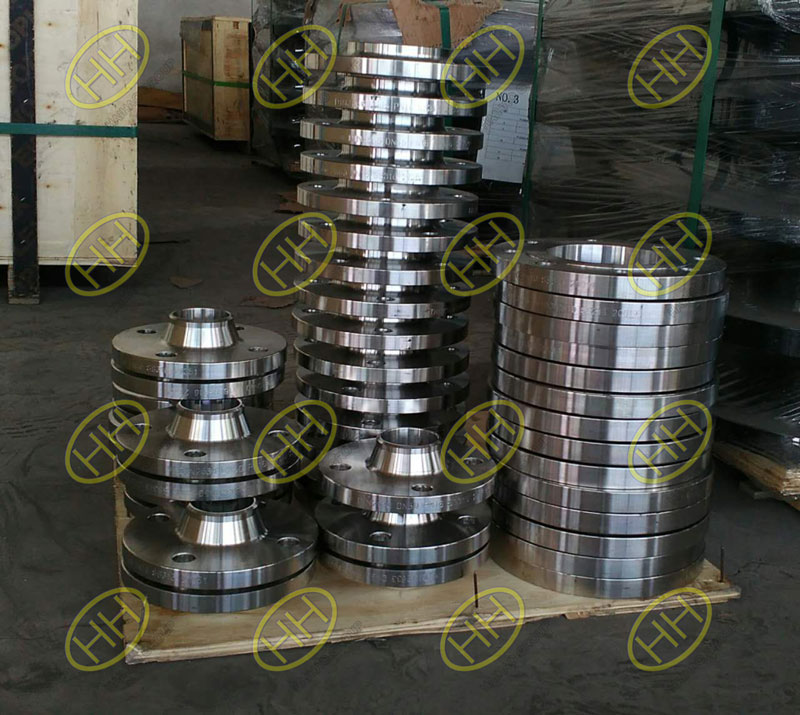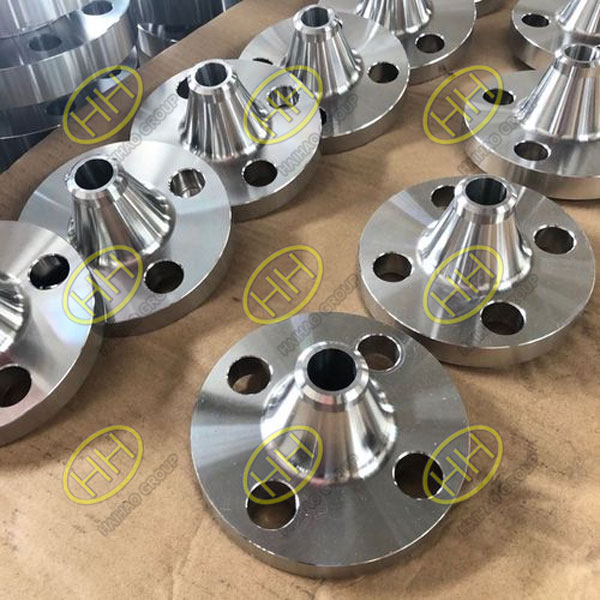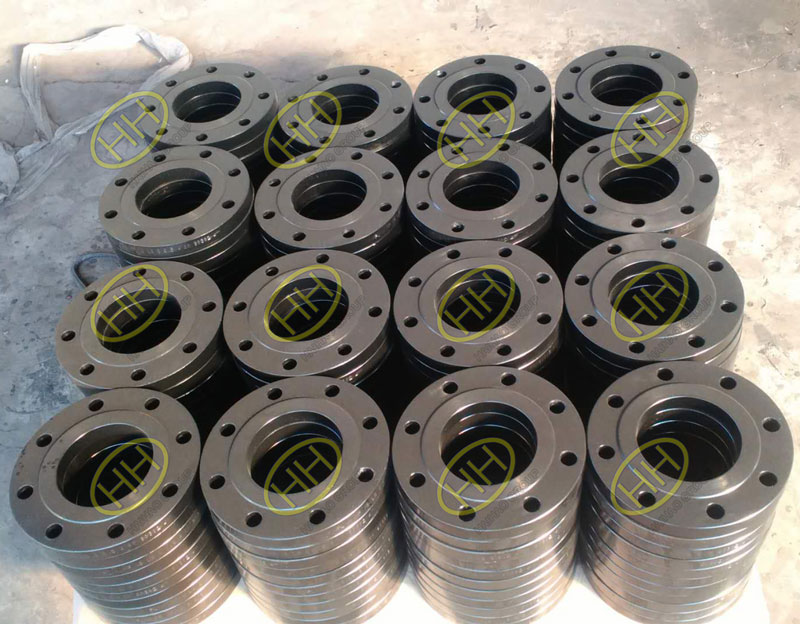Difference between weld neck flange and slip-on flange
Weld neck flanges and slip-on flanges are one of the most commonly used flanges, and many people don’t know how to distinguish between these two flanges.Let’s see the difference between weld neck flange and slip on flange.The distinction between weld neck flanges and slip-on flanges is primarily evident in their design, welding methods, pressure handling capabilities, installation costs, and their respective applications in industrial piping systems. Each type of flange serves specific roles depending on the requirements of the system. Below is a more detailed and technical comparison of the two types.

Stainless steel SS316 weld neck flanges vs slip on flanges
1.Differences in Design and Structure
Weld neck flanges feature a long, tapered hub that provides a smooth transition between the flange and the pipe. This tapering helps distribute stress evenly and reduces concentration points, making it ideal for systems that endure high pressure and temperature. The extended neck allows for gradual stress distribution, enhancing the durability and reliability of the connection under extreme conditions.
In contrast, slip-on flanges have a simpler design with no extended neck or hub. The pipe slides directly into the flange bore, where it is welded both inside and outside. This design is less robust compared to weld neck flanges, but it offers easier alignment during installation. Slip-on flanges are typically used in less demanding applications where pressure and temperature loads are moderate.

ASTM A350 LF2 CL1 ASME B16.5 weld neck flanges
2. Differences in Welding Methods
Weld neck flanges require a butt weld at the neck, ensuring full penetration and a secure, high-strength connection. This type of weld offers superior performance in terms of stress resistance and integrity, making weld neck flanges the preferred choice in high-pressure environments or where fatigue resistance is critical.
Slip-on flanges, on the other hand, use fillet welds on both the inside and outside of the flange. The pipe is simply slipped into the flange before welding, which simplifies the installation process but results in lower overall strength compared to the butt weld of a weld neck flange. The use of fillet welds means that slip-on flanges are more suited for low-pressure applications.
3. Differences in Pressure Resistance and Durability
Weld neck flanges offer superior pressure and temperature resistance due to the gradual transition from the flange to the pipe through the tapered neck. This reduces the likelihood of failure under high-stress conditions, and the full penetration weld ensures a highly reliable seal. The nominal pressure of the Welding neck flange is 1-25MPa, and the grade is higher.These flanges are ideal for systems with fluctuating pressure, high temperatures, or corrosive media, such as those found in oil and gas pipelines or petrochemical industries.
Slip-on flanges, while easier to install, lack the same level of pressure resistance. The fillet welds do not provide the same strength as the butt weld used with weld neck flanges, making them less suitable for high-pressure systems.Nominal pressure of slip-on flange is 0.6-4MPa grade, compared with the butt welding neck flange, the pressure level is relatively low, the ability to adapt to stress will be slightly lower. They are commonly used in low-pressure, non-critical applications such as water, air, and low-temperature fluid systems.

ANSI B16.5 A105 RF forged slip on flanges
4. Differences in Installation Complexity and Cost
Slip-on flanges are usually processed from ordinary steel plates with the required thickness, while weld neck flanges are mostly processed from forged steel parts. The strength and toughness of forged steel are usually better than ordinary steel plates, so weld neck flanges are more superior in material.
The installation of weld neck flanges is more complex due to the requirement for precise alignment and full penetration butt welding. The longer neck requires more skilled labor to ensure that the weld is both properly aligned and fully penetrated. This results in a more labor-intensive and costly installation process. Additionally, weld neck flanges themselves are generally more expensive due to the extra material required for the neck and the more rigorous welding specifications.
In contrast, slip-on flanges are much simpler to install. Since the pipe only needs to be slipped into the flange and welded with two fillet welds, the process is quicker and requires less precision. As a result, installation costs are lower, and the overall project cost is reduced, making slip-on flanges a cost-effective solution for non-critical systems.
5. Differences in Applications
Weld neck flanges are widely used in critical applications where high pressure, high temperature, or extreme stress conditions are present. Their robustness and durability make them suitable for industries such as oil and gas, chemical processing, power generation, and offshore drilling, where any failure could have serious consequences.
Slip-on flanges are typically found in less demanding environments, such as water distribution, HVAC systems, and general industrial applications where the pressure is low, and the risk of stress-induced failure is minimal. They offer an economical solution for systems that do not require the high integrity of weld neck flanges.
Summary Table:
| Feature | Weld Neck Flange | Slip-On Flange |
|---|---|---|
| Design | Tapered hub, long neck | Flat, no neck |
| Welding Type | Butt weld | Fillet weld |
| Strength | High | Moderate |
| Cost | More expensive | Cheaper |
| Installation | Complex, precise alignment | Easier and quicker |
| Applications | High-pressure, critical systems | Low-pressure, non-critical |
The choice between weld neck flanges and slip-on flanges depends on the specific requirements of the piping system. Weld neck flanges are preferred for high-pressure, high-stress applications due to their superior strength and stress distribution capabilities, while slip-on flanges are more suited for lower-pressure, less critical systems where ease of installation and cost savings are prioritized.
Haihao Group, as a leading manufacturer of forged flanges in China, offers a comprehensive range of high-quality flange products tailored to meet various industrial needs. With extensive expertise in flange production, we provide solutions for diverse applications, ensuring reliability and precision. For more information on our forged flange offerings or to discuss your specific requirements, please feel free to contact us at sales@haihaogroup.

